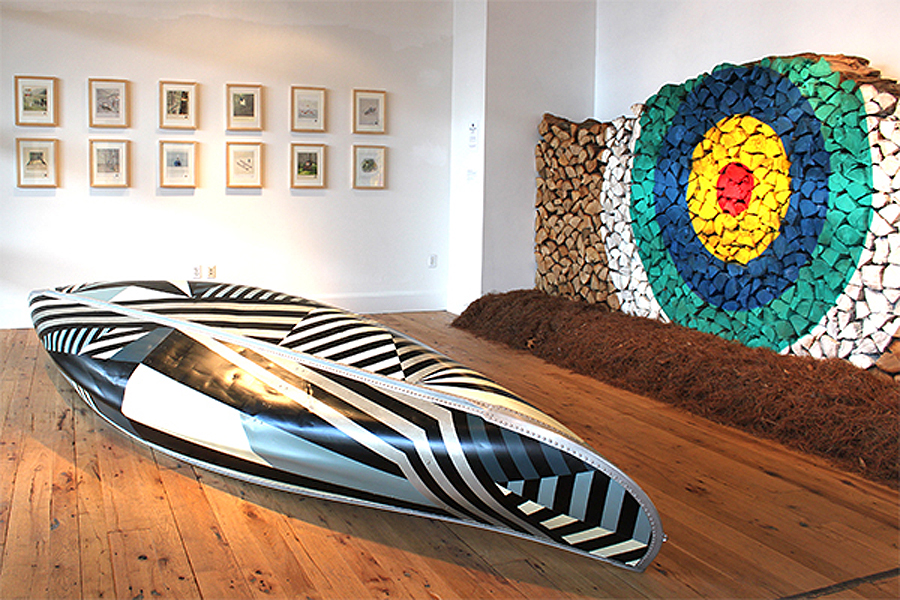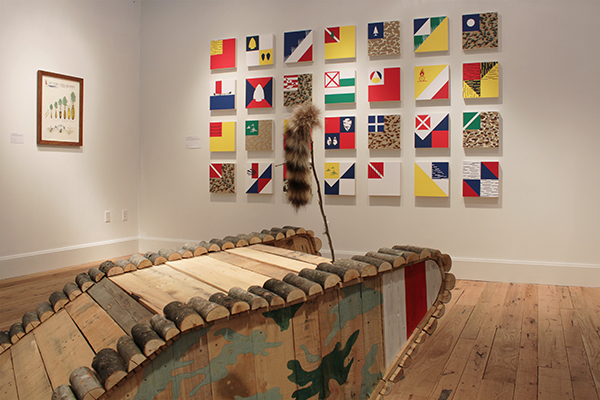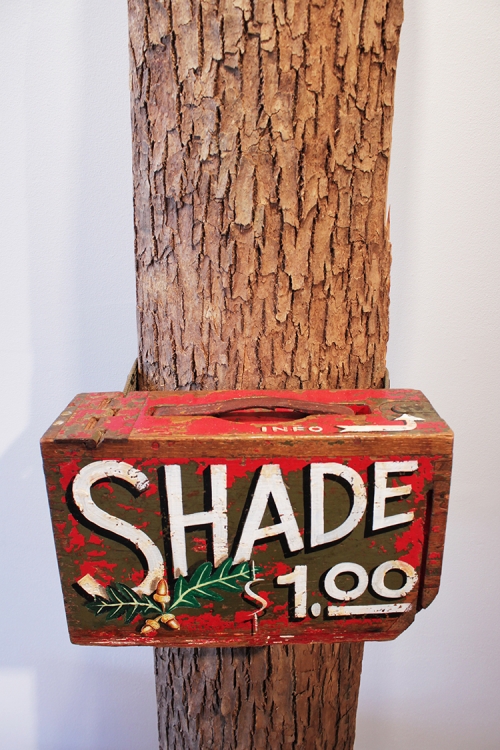While we gawk at Mother Earth’s man-made hiccups, concomitant BPA-free canteens in hand, Massachusetts artist and formally trained landscape architect David Buckley Borden is doing something by making ecology mindfully ornamental.
Expanding on his ongoing initiative to communicate environmental issues to the masses through his art and design, Borden teamed up with Trifecta Editions for their inaugural year-long artist-in-residency program, Hibernaculum, to plan and create enlightening (and hands-down awesome) visual conservation installations.
What began as a series of creative and environmentally conscious proposals is now a month-long immersive exhibition at Boston’s Innovation and Design Building Gallery, featuring installations made both on-site at Trifecta’s thirty-acre situation on Eagle Lake, upstate New York, and at the gallery itself. Proving sustainable and transportable, Borden’s installations include a slew of mediums, big and small, kayak to silkscreen, including multi-media drawings, landscape installations (as adapted to the gallery setting) sculpted works and a silkscreen ‘Hex Sign’ print series done with Helen Popinchalk and Morgan Grenier of Trifecta Editions.
Of course, this is only the beginning for Borden’s eco-savvy design work, as he related to us in this recent interview. Of the long list of talented makers involved in this maiden Hibernaculum spectacular (open to the public through June 27th) we’re pleased to introduce you to featured artist David Buckley Borden and Helen Popinchalk of Trifecta Editions:
Where did the Hibernaculum Exhibition idea stem from?
David: The Hibernaculum is Trifecta Editions’ free-form artist residency at Eagle Lake in the Adirondacks. Every other year, Trifecta selects one artist to unplug, unwind and create a project and print series based on their time in the Hibernaculum. I was invited to be Trifecta’s first artist-in-residence after they saw work I had made for the 2014 Boston Fun-A-Day project. Each day for a month, I made a new landscape proposal. We translated several of these “sketches” into real-life forest installations and artworks both on and off-site.
David, your exhibition utilizes quite a unique amount of land, materials and space. What was your designing/building/creating process like? Were there elements of the process that you weren’t expecting?
David: The work was really inspired by my experience in the Adirondacks. My work is typically place-based and relates to the landscape itself. The Hibernaculum residency allowed me to dig into some of interest in regional ecology and dive into some of the issues the ecosystem is currently facing. Once I returned from Eagle Lake with the concepts, the larger work materialized in Boston through collaborations with a variety of folks ranging from painter Cyrille Conan, woodworker Jared Laucks, graffiti artist KEMS, illustrator Jack Byers and many other artists and designers.
What particular environmental issues does the Hibernaculum address?
David: I explored issues related to non-native invasive species, both flora and fauna. These were explored in a variety of media ranging from sculptural installations to the silkscreen Hex Sign series done with Helen and Morgan of Trifecta Editions.
Did any environmental solutions or plans come out of the year-long immersion?
David: Yes, we fleshed out a path system for the Hibernaculum Art Trail to link a variety of ecologically driven works, such as the “Snack Stand,” “Habitat Blanket” and “Invasive Species Tank.” Most of the designs are educational in intention and were created to communicate a particular woodland ecology issue.
What was the biggest challenge translating your work from nature to a gallery setting?
David: The challenge was creating work that could be easy installed and uninstalled. Many of the forest installations were “light touch” – we were working with the knowledge that we’d need to eventually bring the art to a gallery setting. The nature of the temporary “plug and play” mobile installation has always appealed to me.
Do you see your work expanding on this exhibit in the future? Are there ideas or future projects that this experience inspired?
David: The exhibition is based on my long-term interest in landscape ecology issues and my ongoing mission to make environmental issues and everyday ecological crisis relevant to folks by way of accessible art and design. I’ll continue with some of the same themes in my next show in Jackson, Wyoming at Daly Projects in October. Although, for this project, I’ll apply it to the Greater Yellowstone Ecosystem.
Trifecta’s first resident artist! What was the process like as facilitators? This is quite a unique presentation of art and scale.
Helen: Part of Trifecta’s mission is to offer emerging artists opportunities that are otherwise reserved for those more established in their careers. The creation of the residency was fueled by our passion to further this goal…and spend more of our summer in the Adirondacks with people we like working with!
This has been one of the most rewarding projects we have ever worked on. By focusing on a body of work for over a year with just one artist, we were able to create a rich, meaningful and immersive experience both at Eagle Lake and in the gallery. It’s been so much fun working with David and all of the many project collaborators.
After this resident artist experience, what does your next artist residency look like? Do you think you’ll continue in the Hibernaculum scape?
Helen: It will be hard to top this experience but we know many talented artists that are up to the task! We love the concept and potential interpretations of the Hibernaculum. We’re sticking with it. We’ll be announcing our 2016 artist later this year… stay tuned!





